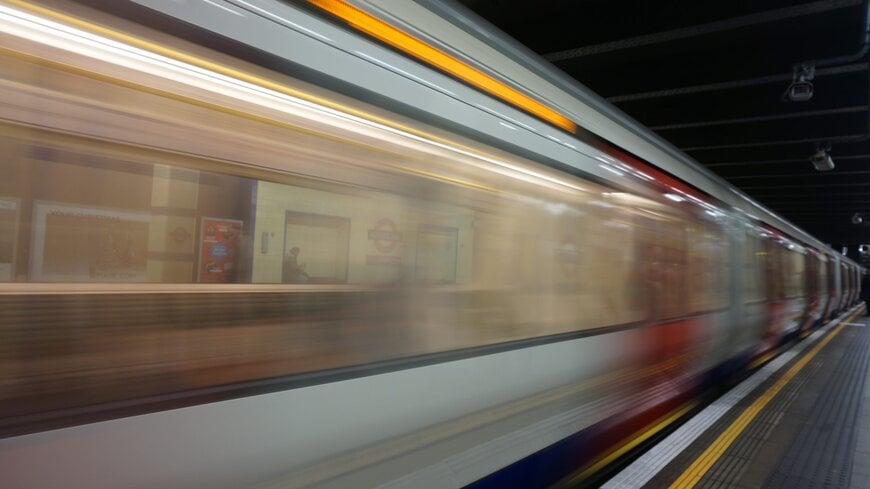Driving Revenue Growth Through Rail Reliability
In the UK rail industry, reliability is more than just a performance metric—it’s a revenue driver.
www.viperinnovations.com

When trains run on time, passengers and freight customers are more likely to choose rail over other modes of transport.
This increased usage translates directly into higher ticket sales and freight contracts. There’s a straightforward correlation: reliability drives revenue.
However, conversations with senior leaders in Office of Rail and Road (ORR), the Department for Transport (DfT) and Network Rail suggest that the link between reliability and revenue is not fully understood or prioritised. It seems one solution to drive revenue growth is aligning operational performance with financial outcomes.
By investing in infrastructure and maintenance that ensures a consistent and on-time service, the rail industry can unlock significant revenue potential. This article explores how reliability underpins a successful, self-funded railway and outlines some practical steps to achieve it.
Why the Current Model is Not Structured to Generate Enough Revenue
The existing rail model faces several challenges limiting revenue growth. Unreliable services lead to passenger dissatisfaction and disruption for freight customers, leading both stakeholder groups to consider other options, like road transport. The outcome? Lost revenue and increased operational costs per mile travelled – the same cost base has less income to support it.
Furthermore, penalties such as delay repay schemes further erode profits, creating a cycle of financial strain. Schedule 8, intended to compensate for poor performance, can inadvertently incentivise inefficiency by rewarding operators for running congested schedules.
Maintenance practices, particularly those involving power supply systems, can be intrusive and limit service availability. For example, constant overnight maintenance prevents the possibility of a 24/7 railway.
These systemic issues highlight the need for a model that prioritises reliability and aligns incentives across all stakeholders, right from track maintenance teams to the train operators themselves. Addressing these challenges is essential for building a resilient and profitable rail network.
What Makes a Revenue-generating Railway?
A revenue-generating railway is built on shared objectives and seamless collaboration. Easy to say, but how can this be achieved when there are different objectives, sometimes markedly different, between stakeholders?
The difference between the current situation and what might happen under the emerging GBR framework, is the integration of track and train operations. This should mean that every stakeholder, from infrastructure managers to service providers, will share responsibility for customer satisfaction. Afterall, everyone will have skin in the game, as a failing network will impact every stakeholder group.
Reliability becomes a common goal and can be supported by innovative technologies that enable minimally intrusive asset management, like Cable Guardian. Proactive maintenance and data-driven decision-making ensure that trains run on time and assets perform consistently.
Service models like Transport for London’s demonstrate how clear specifications and performance-based contracts can eliminate barriers and drive efficiency. Ultimately, a successful railway treats passengers and freight customers as its core business, aligning every operational decision with their needs. This approach not only improves service quality but also creates a sustainable revenue stream that supports long-term investment and innovation.
How to Increase Revenue in Practice
Increasing revenue starts with delivering the basics: safe, reliable, and available train services. Without these fundamentals, efforts to expand offerings or attract new customers will fall short. Railways must focus on consistent performance, ensuring that trains run on time and infrastructure supports uninterrupted service.
Innovations like 24/7 operations and flexible ticketing can enhance customer appeal. For instance, offering free travel for children during holidays, as seen on buses, could boost family travel on trains. Additionally, exploring alternative revenue streams, such as repurposing passenger trains for fast freight or leveraging overhead cables for EV charging, can diversify income.
These initiatives must be underpinned by a robust operational foundation. By prioritising reliability and aligning incentives across the network, the rail industry can create a compelling value proposition that attracts passengers, retains freight customers, and drives sustainable growth.
A Call to Action for the Rail Industry
To realise the full potential of the UK rail network, stakeholders must embrace a unified vision centred on reliability and revenue generation. This means rethinking incentive structures, investing in innovative technologies, and fostering collaboration across departments. The transition to GBR offers an opportunity to align track and train operations under a common business model. However, success depends on clear strategies and consistent funding.
SMEs and technology providers need support to continue developing solutions that enhance performance. Policymakers must recognise the economic and environmental benefits of a reliable railway, from reduced road congestion to lower carbon emissions.
By treating reliability as a strategic asset, the industry can build a network that not only meets customer expectations but also drives national growth. It’s time for the rail sector to move beyond reactive fixes and adopt a proactive, revenue-focused approach.
Building a Better Railway Together
A reliable railway benefits everyone, from passengers and freight customers to operators and the wider economy. By focusing on operational excellence and aligning incentives, the UK rail industry can increase revenue, reduce costs, and support national goals like carbon reduction and export growth.
The path forward requires investment, innovation, and a shared commitment to performance. With the right strategies in place, the railway can become a cornerstone of sustainable transport and economic development. Let’s work together to build a network that delivers for all.
www.viperinnovations.com

